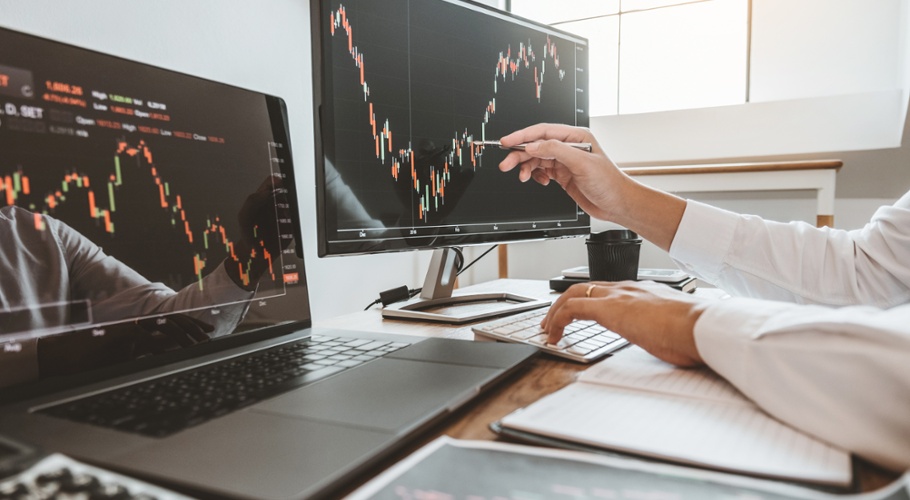Why equity valuations might soon matter again
Bottom-up value managers generally don’t get much attention in an era in which passive funds and growth managers are among the most popular investments in the market. But Melbourne-based Talaria bucked this rule somewhat in the six months to June 30, ranking 13th in terms of inflows out of 59 issuers in the local Exchange Traded Funds industry.
Those inflows were directed to its Australian based products: the Talaria Global Equity Fund Complex ETF (Cboe: TLRA) and its currency hedged counterpart. The self-described “alternative global equity manager” chooses securities for its 25-35 security portfolio using a normalised cash returns framework - a classic value approach.
It commits capital only when a stock is at a minimum 20% discount to its estimate of fair value. Every equity starts out in its portfolio as a put option to exploit the volatility risk premium, which generated half of its 11% per annum over the past five years, according to the fund manager.
AUSIEX spoke to Hugh Selby-Smith, Talaria’s Co-Chief Investment Officer, to get his perspective on the still uncertain market environment and where he sees the opportunities in global equities for the remainder of the year.
What is your market outlook for the remainder of 2025?
We don’t make market forecasts or invest top down, though do factor the macro conditions of the global economy and markets generally into our risk management decisions.
Our view is that we’re at the end of a golden era in which nominal cash flow growth and low cost of funding diverged to drive up the prices of a broad range of assets.
In an environment where this dynamic is, at best, no longer a tailwind, valuation should come back into focus.
The playbook that may work well in this environment includes:
- Shorter duration assets (as they are less vulnerable when rates are rising)
- Treasury inflation-protected securities and real assets (as they can help preserve purchasing power if inflation is persistent)
- Companies with strong balance sheets as they are more flexible and better positioned to manage volatility
- Genuine diversification (as portfolios that draw from uncorrelated sources of return are more resilient).
Many securities in our universe – which is global, developed market listed companies ex Australia – are currently expensive, particularly in the United States (US).
There are less opportunities for a value manager like Talaria in the US, and it accounts for around 40% of our current equities exposure (including a few emerging market companies with NYSE listings).
We are overweight in health care, in particular, with a 23% allocation. The portfolio has only a 2% allocation to the information technology sector and no Magnificent Seven holdings.
Again, the portfolio is never a function of our view on a country, region or sector – it’s simply a reflection of the bottom-up opportunity set.
What individual securities might meet those criteria?
A couple of resource companies in our portfolio are worth mentioning. Miner Newmont (ASX/NYSE: NEM) owns some of the most attractive gold mines globally after divesting non-core assets. Its shares rose after a strong Q2 result characterised by good cost management and conservative FY25 production guidance. It also increased cash returns to shareholders via a new US$3 billion buyback.
The company has considerable balance sheet optionality, meaning it could fund even more capital management initiatives. Hence, with the stock trading on a an approximate 8% free cashflow yield (based on spot gold prices), we believe there is still potential upside for shareholders.
Secondly, oil and gas company EOG Resources (NYSE: EOG) in Talaria’s opinion offers a combination of financial strength, capital discipline and shareholder returns. Its production growth of 5% to 7% is supported by disciplined capital expenditure and substantial reserves with an average life of 12.5 years at the end of 2023.
Beyond resources, we have a positive view on Swiss pharmaceutical company Roche (SWX: ROG). It recently improved its growth guidance and progressed a number of pipeline drug trials. It has an earnings yield of over 7.3% and dividend yield of 3.7% on a 50% payout ratio, which leaves significant cash flow for acquisitions. It has no significant patent expiries scheduled for this decade and spends over 20% of its revenue on Rresearch and Ddevelopment.
Global reinsurer Everest Group (NYSE: EG) is currently trading at 0.9 times price to book but in our view could sustainability generate return on equity of 13% to 15% over the coming years. A dividend payout of 15% to 20% on normalised earnings currently yields 2.4%. The retained earnings of 80% to 85% help grow the book value per shares at a rate of 10% to 13% per cent – in the absence of multiple re-rating, we expect these two components to drive mid-teen returns per annum for shareholders over the medium term.
How did the portfolio perform in noted periods of volatility, including following Donald Trump’s Liberation Day and during COVID-19?
We typically benefit from periods of market uncertainty as we implement our stocks via cash backed put options, which are priced off volatility.
Liberation Day caused a large spike in Cboe’s Volatility Index (VIX) and we took advantage of it in two ways. Firstly, we generated more option premium from stocks we wanted to own. Secondly, we sold put options on equities we also wanted to own – but at a much lower price than the trading price at the time.
This was similar during COVID. In 2020, we generated approximately 11% of option premium alone.
Talaria is a third-party company and is not part of AUSIEX.
To find out more about how to optimise your ETF trade execution, contact your Account Manager or a member of our Business Development team.

